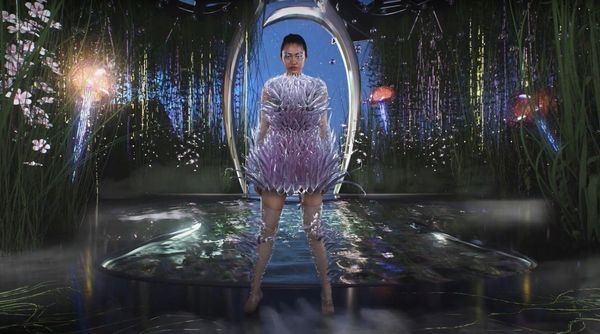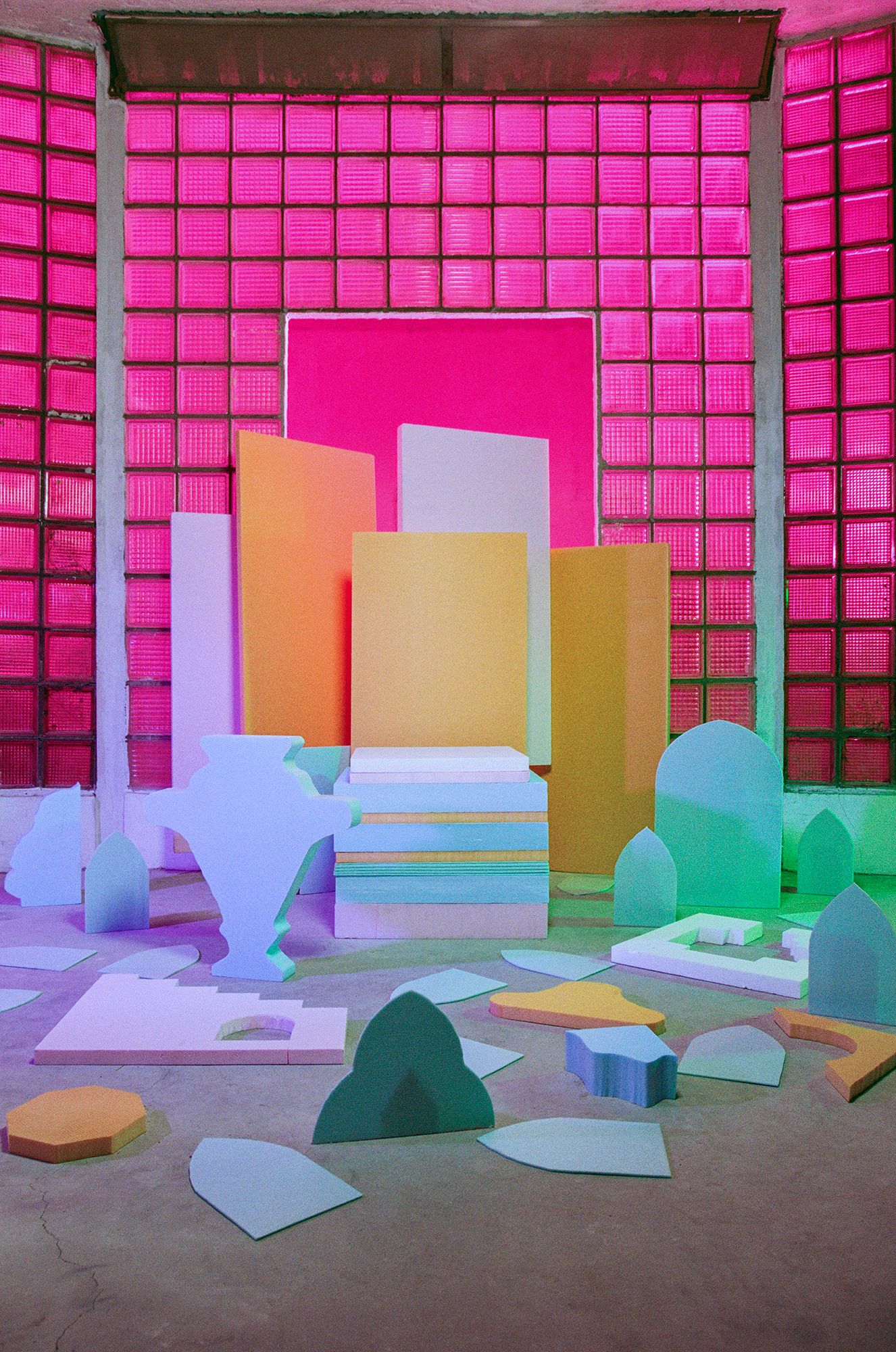A long consultation and preparation preceded the completion of the photo series, which took the form of a calendar to celebrate the 12th birthday of the Nanavízió architectural firm. From the joint project of Éva Szombat with Nanavízió, on January 15, 2022, an exhibition entitled Nanavízió x Éva Szombat: Women Quota was opened in Budapest, in the Három Holló. The architect’s office celebrated its 12th anniversary this year. The team brings together twelve staff members, eleven of whom are women.
Taking advantage of the attention given to them for their birthday, they wanted to highlight an important topic that affected them as an architect and a woman. We see men in the most significant roles in our society, and it is no different in architecture: if somebody asks what architects we know, we will only name men. “But if there are so many women in Nanavízió and women have long been the majority in the faculties of architecture, where are they in the other architectural practices? Where are the self-employed women who run their own architectural firms? Where are you, girls?” asked Noémi Soltész and Nóra Pajer with the team of Nanavízió. The project gained its final form through the lens of photographer Éva Szombat, who won the Capa Grand Prize last year.

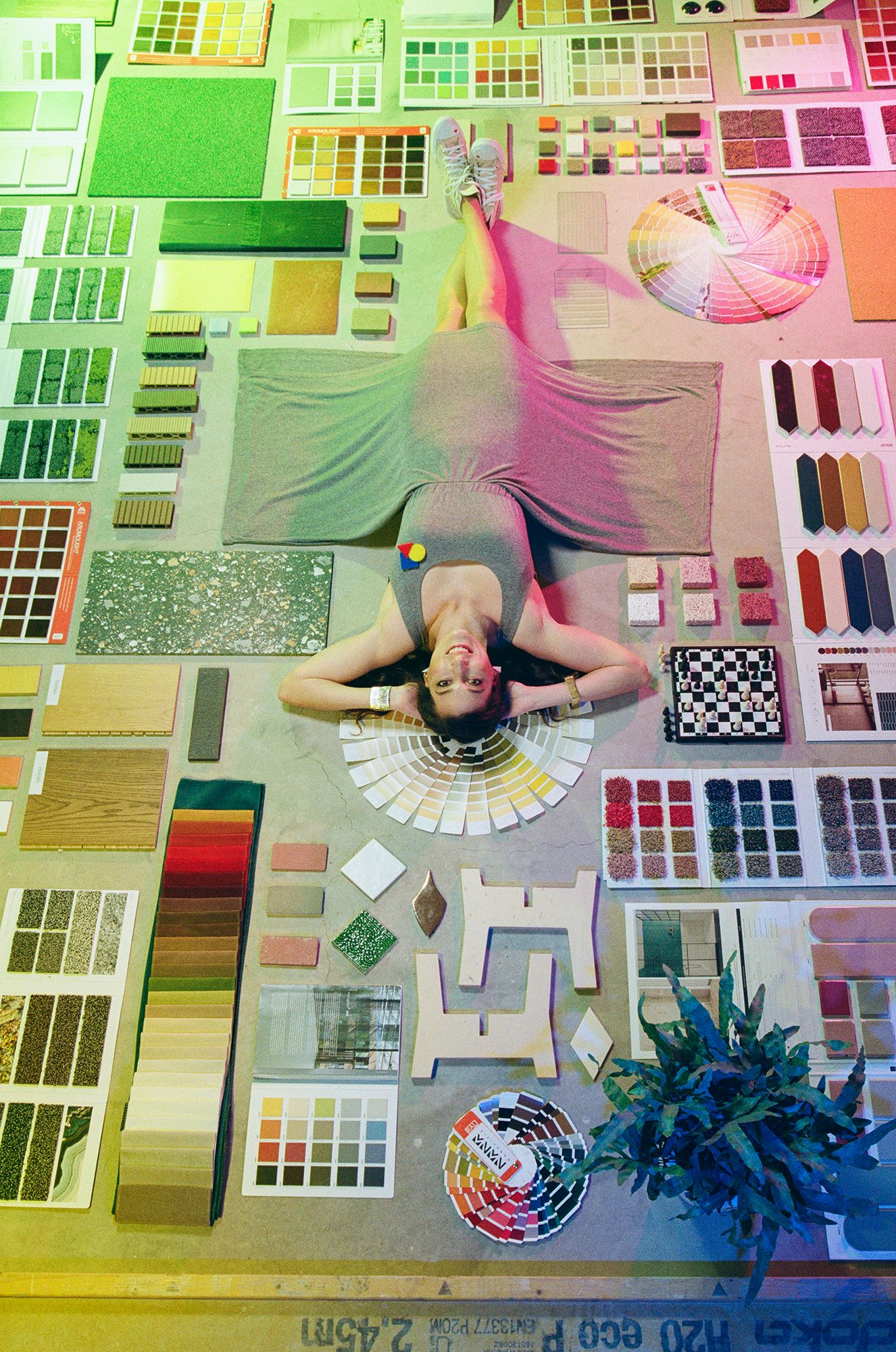
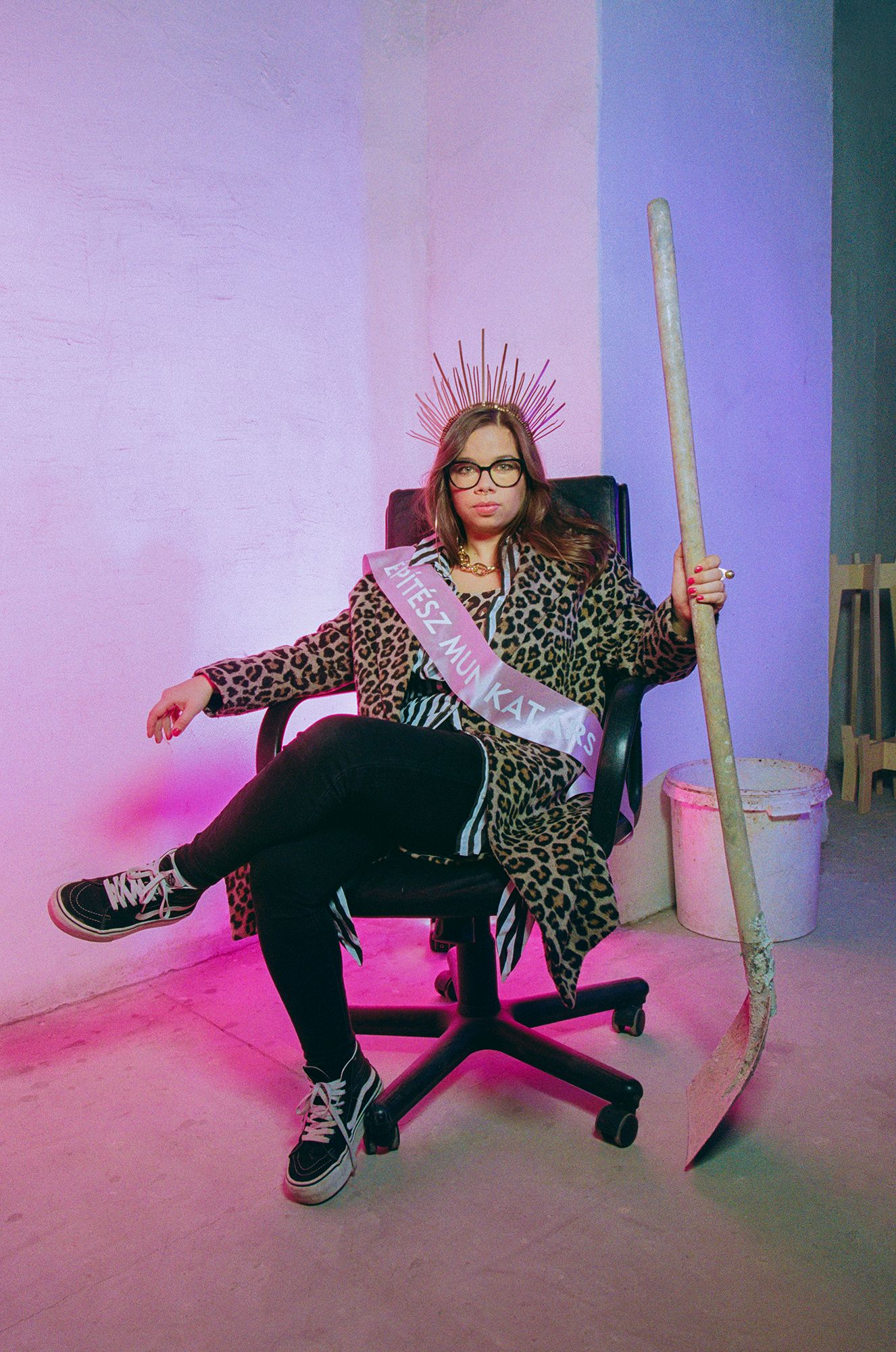
The majority of women in Hungarian architecture education become invisible after university. Many leave the field, work anonymously in male-run architectural firms, and may turn to interior design. In professional boards, in education, among the leaders of the architecture community, you rarely find a woman, and there may be one on the professional juries, just for show: this is what Noémi Soltész refers to as a “woman quota”. This trend is present not only in architecture but also in photography, notes Éva Szombat. Through the images of the Women Quota, female professionals of architecture became visible, we can discover a whole new face of both architects and architecture. The photos show many and varied objects, from colorful, vibrant, filigree items and tiny trinkets to heavy tools used on construction sites. Stylist Bálint Katona helped the work of Éva Szombat and the architects in selecting the objects and creating the scenes.


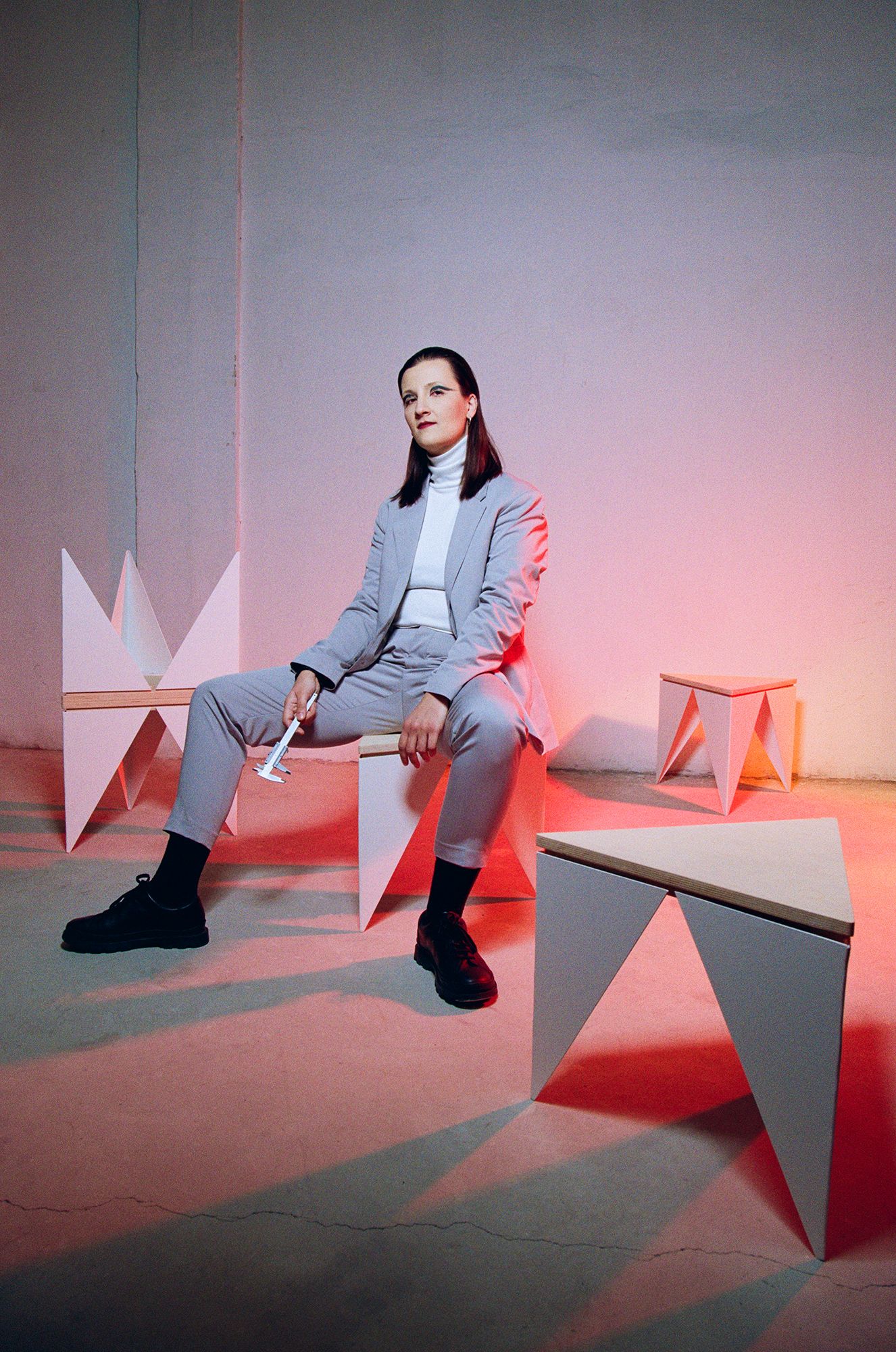
“When I photograph someone, I want to do it by reflecting their personality, shaping their environment to be surrounded by the most characteristic shapes, and moving their gaze so that its power can be felt through the camera.”
The gaze also played an important role in the composition of the twelve photographs. The architects of Nanavízió look back at us with striking power in most images. The relationship between architecture and women is not equal to having a beautiful female figure in the space as a building sculpture, or perhaps as a subject for a photograph, or a user of a building. But more than that: Eszter Pécsi, the first Hungarian female architect, graduated 102 years ago, and since then, women have also been active figures in architecture.
“In the case of Nanavízió, one woman is standing next to another, and next to them there are nine more women and one man. The use of the preposition points much further than it seems at first glance, since dictionaries determine thinking patterns: in this case, the much and rightly criticised “behind,” reflecting the relations of subordination, is replaced by “next to” says Kata Oltai in the curator text of the exhibition.
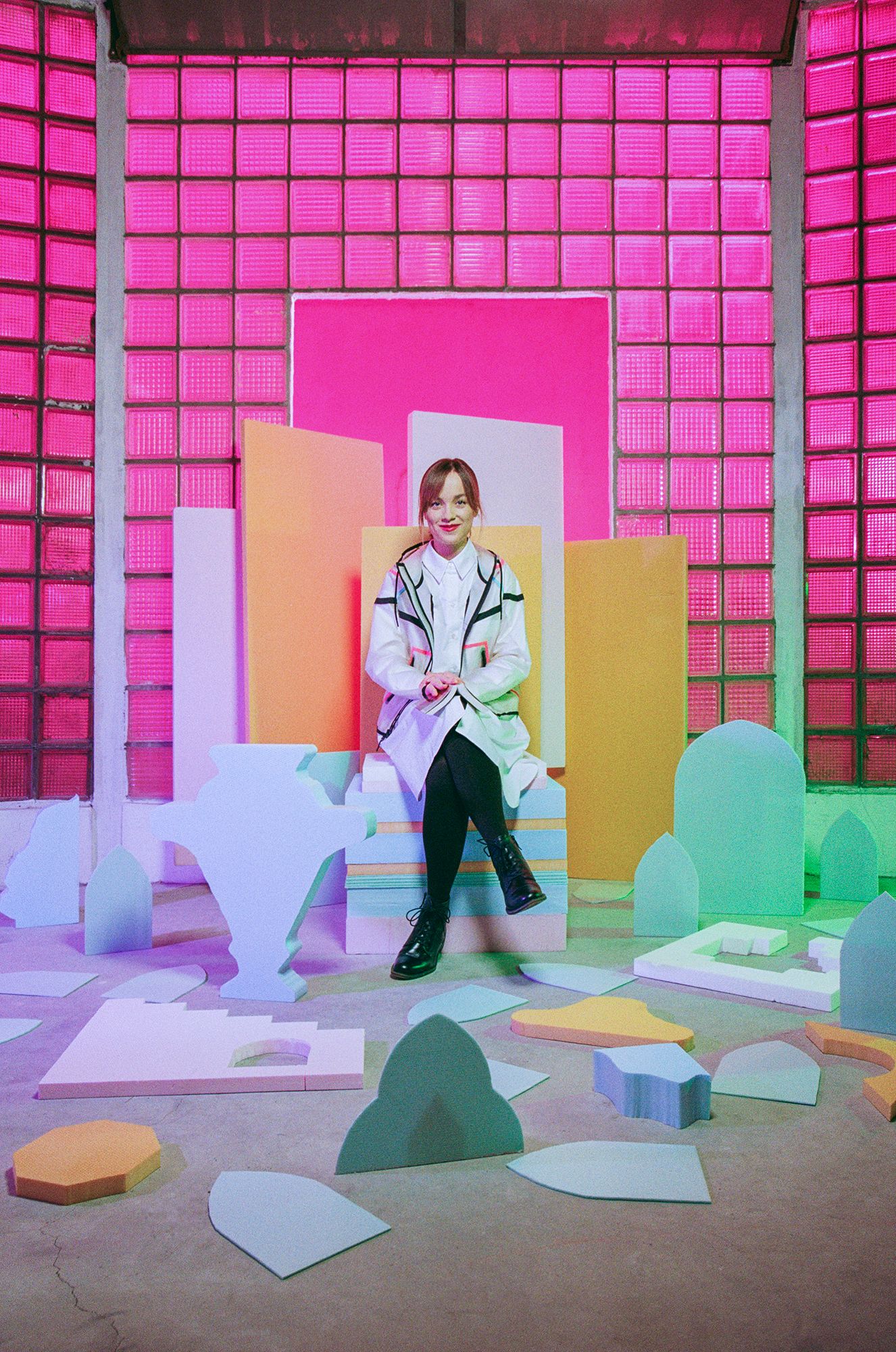

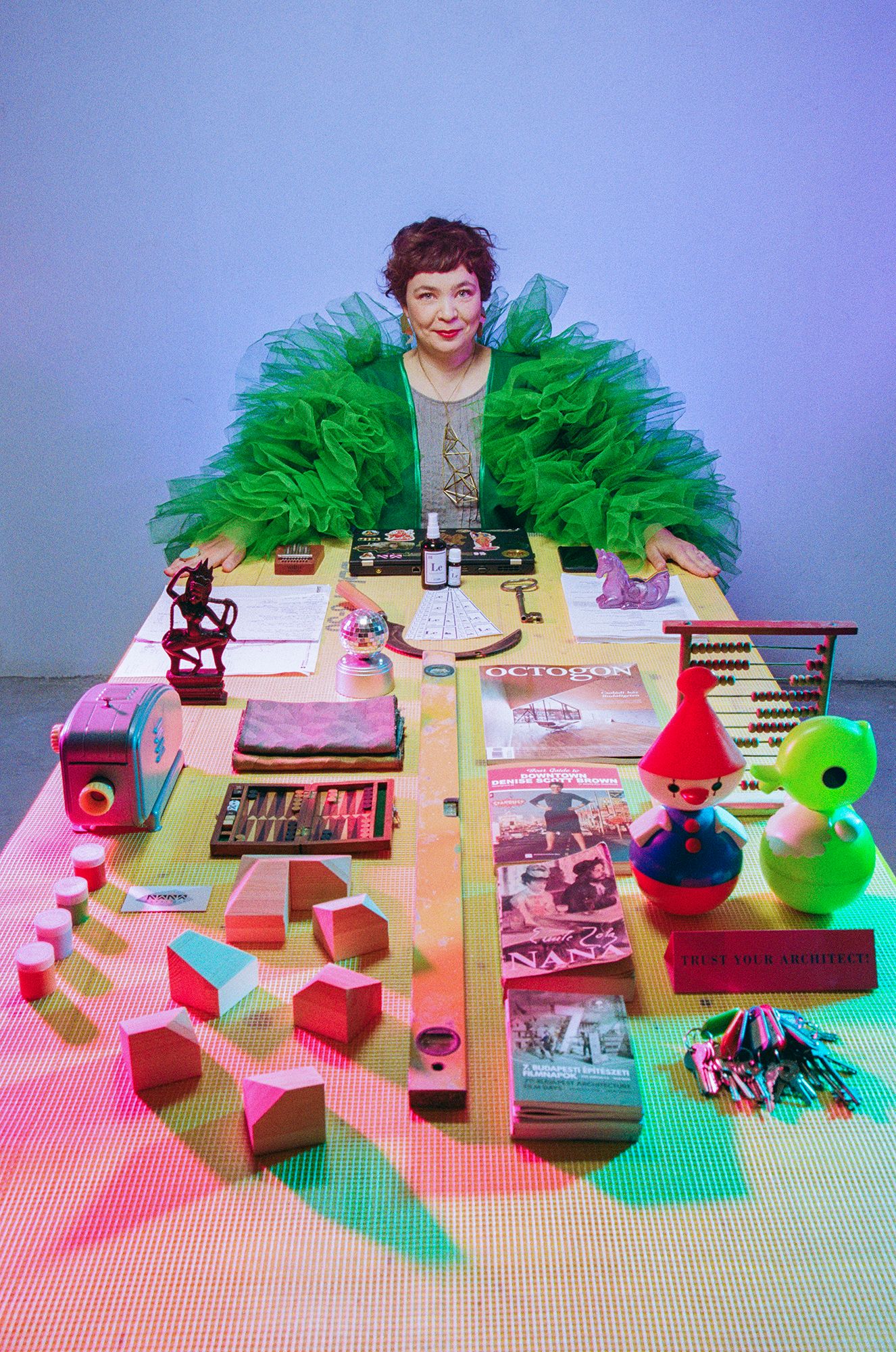
The sometimes quite humorous settings are also saturated with complexity and seriousness. Each employee “settled into their own role” before a different scenery, but the simple space base provided by VPI Concrete remained throughout. We can witness thought-provoking and captivating compositions, there are some, where the display of a hobby beyond the profession, or an object reinforces the thematic plane of the photo. At the same time, the photographs show ideas co-formulated with Éva Szombat, through which we show our relationship to ourselves and architecture, and in a broader context, the relationship between women and architecture. The unity of the series is also reflected in the compositional principle, the play of colors, lighting, and shadows.
Twelve photos in one day can only be taken by a team as well-oiled as Nanavision. The photo shooting was carried out with the precision and accuracy of an engineer, which, looking at the finished photos, could be an exciting challenge and a lifelong experience in front of and behind the camera. “It is a grateful job to work with architects, you can dream almost anything, they make it happen,” said Éva about the process. The theme of the project rhymes with her previous works. Éva translated the ideas of the Nanavízió team into her own visual language and helped them on their mission so that this time, as they put it, they could talk about visibility, instead of their own work. This time the focus is not on architecture, but on the architect, who sometimes happens to be a woman.

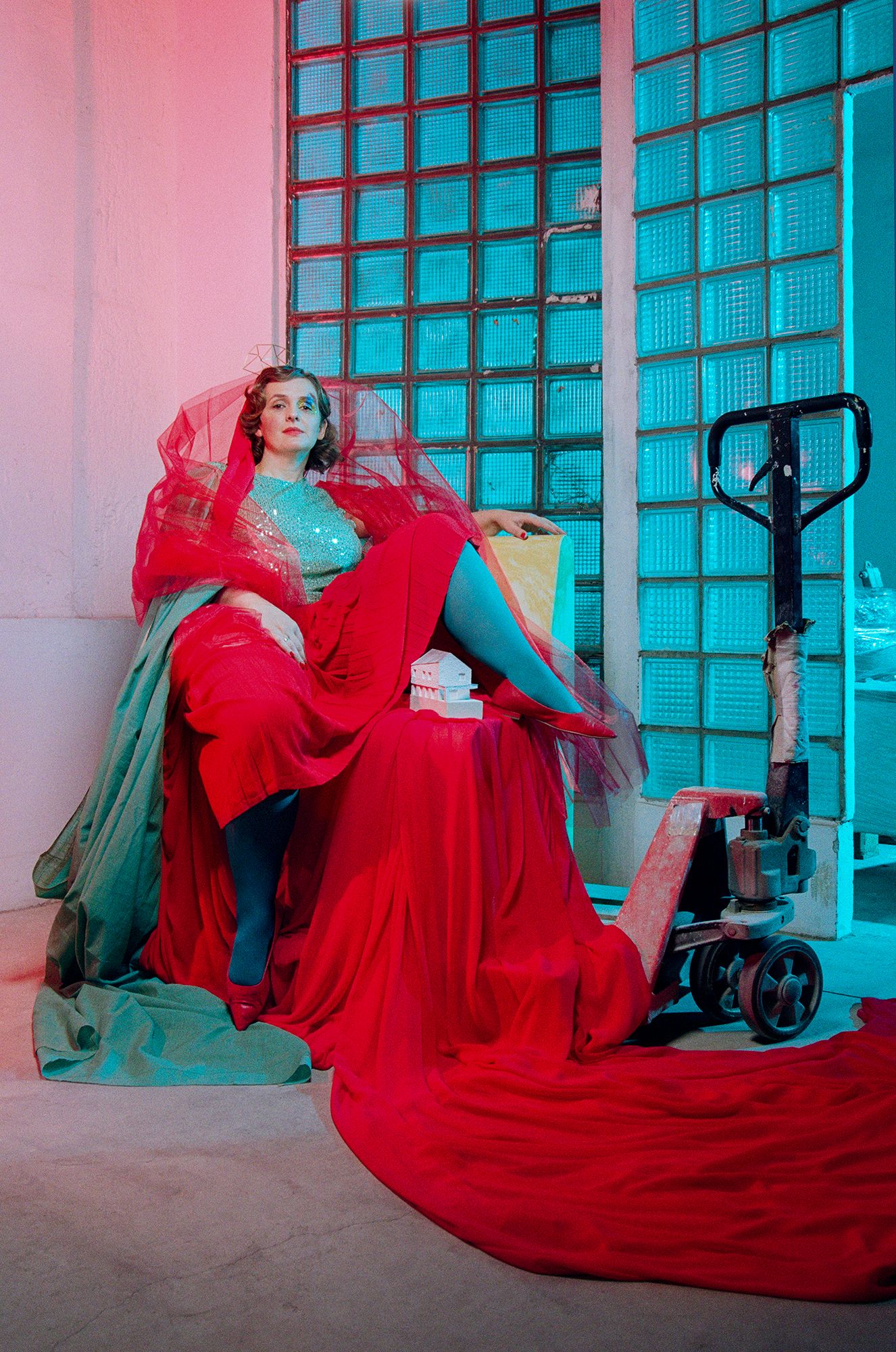
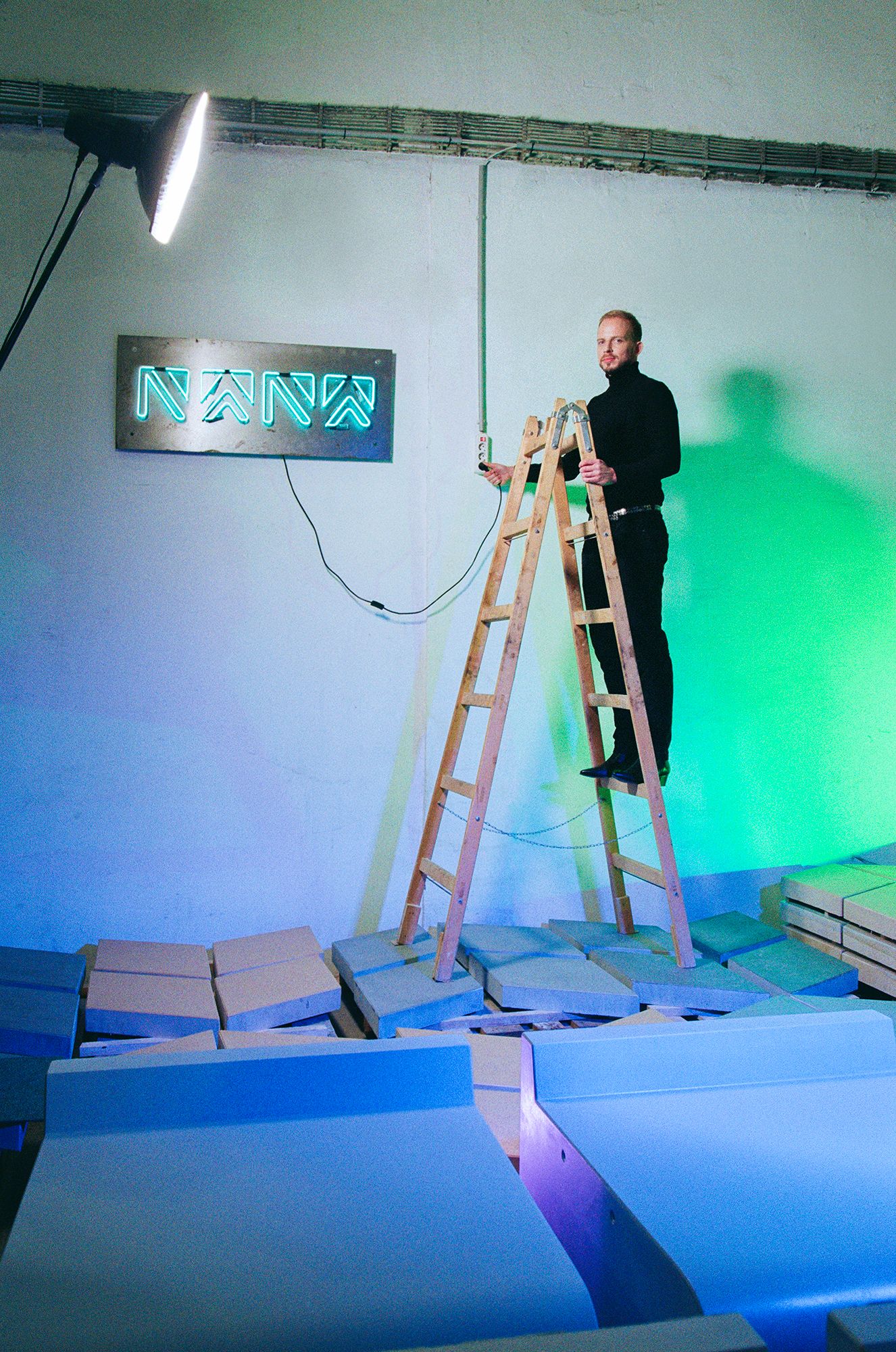
Among other things, we also asked Éva Szombat where this applied project could be placed in her artistic work. It is neither unique nor the first time for her to cooperate in a similar request, however, it is rare that the joint work and the end result are so successful. Thus, among other things, as the project was completed and progressed, the idea of an exhibition was born, where the photos and messages of the completed calendar would be presented to the general public. The exhibition is located in the exhibition hall of the Három Holló, and just like in the photos, it is worth paying attention to the finer details during the installation. The space is filled with the familiar pastel-colored thermal insulation boards, crowned with the neon blue NANA sign, return in the space. And from the bittersweet collection of captions below the pictures, we quote just one: “Are you led by women? How can you handle it?”
concept ★ Nanavízió
photo ★ Éva Szombat
stylist ★ Bálint Katona
text ★ Kata Oltai
graphic design ★ Gyöngyi Barta
communications ★ Virág Járási
concrete ★ VPI Concrete
Nanavízió staff: Nóra Pajer, Noémi Soltész, Fanni Farkas, Dalma Faddi, Bernadett Csendes, Beatrix Guld, Bálint Somogyi, Nóra Csobolya, Zsuzsi Richter, Katalin Gencsi, Rebeka Horváth, Barbara Talabér-Erőss.
The exhibition Nanavízió x Éva Szombat: Women Quota is open until January 28 in the Három Holló.
Nanavízió | Web | Facebook | Instagram
Éva Szombat | Web | Instagram
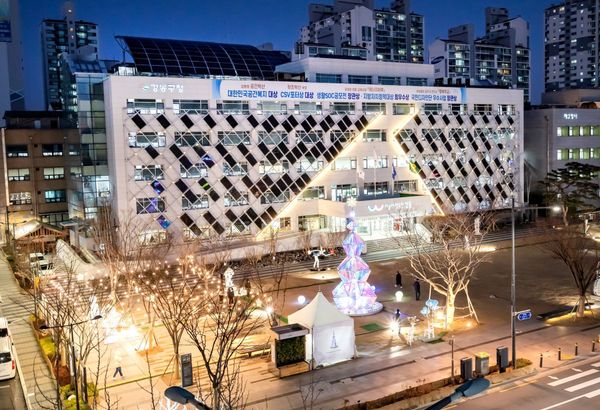
Shaping cities with the participation of its dwellers—Interview with Danny Dong-Yeong Lee

Creativity is an asset in agriculture too | NAK TechLab
